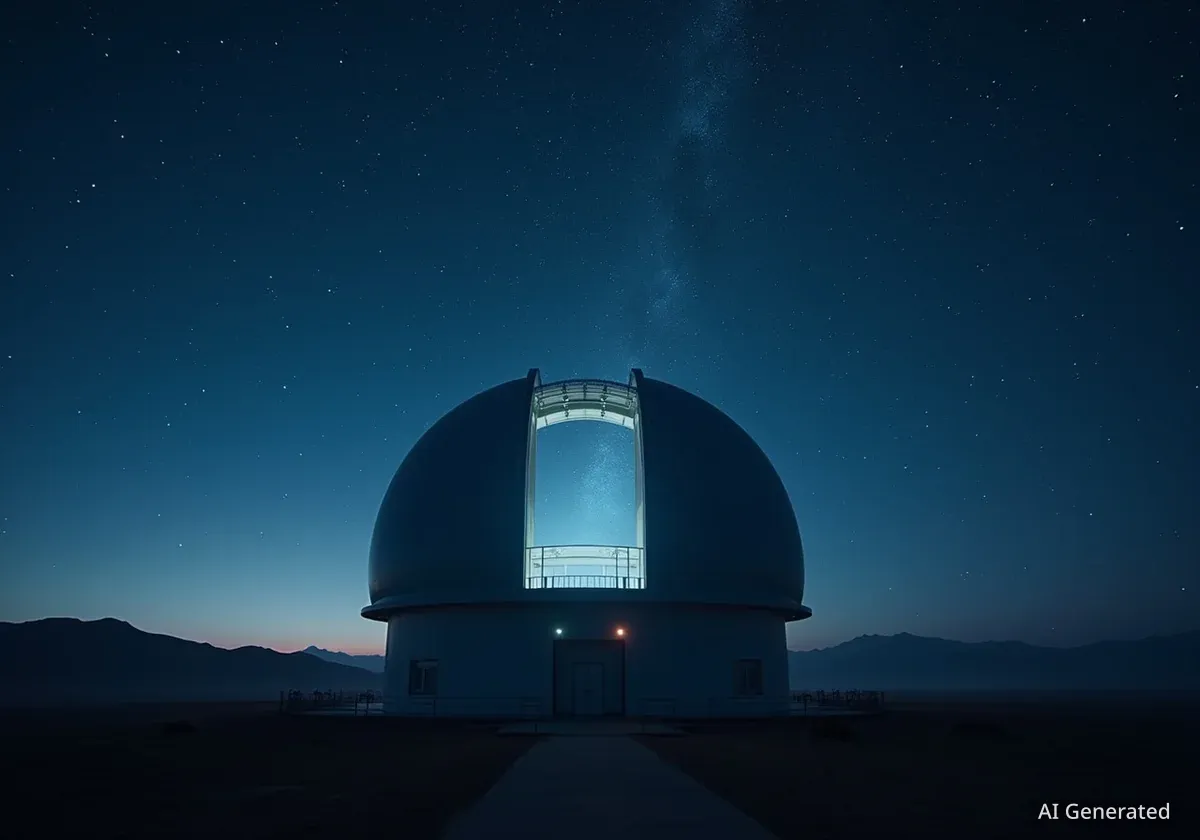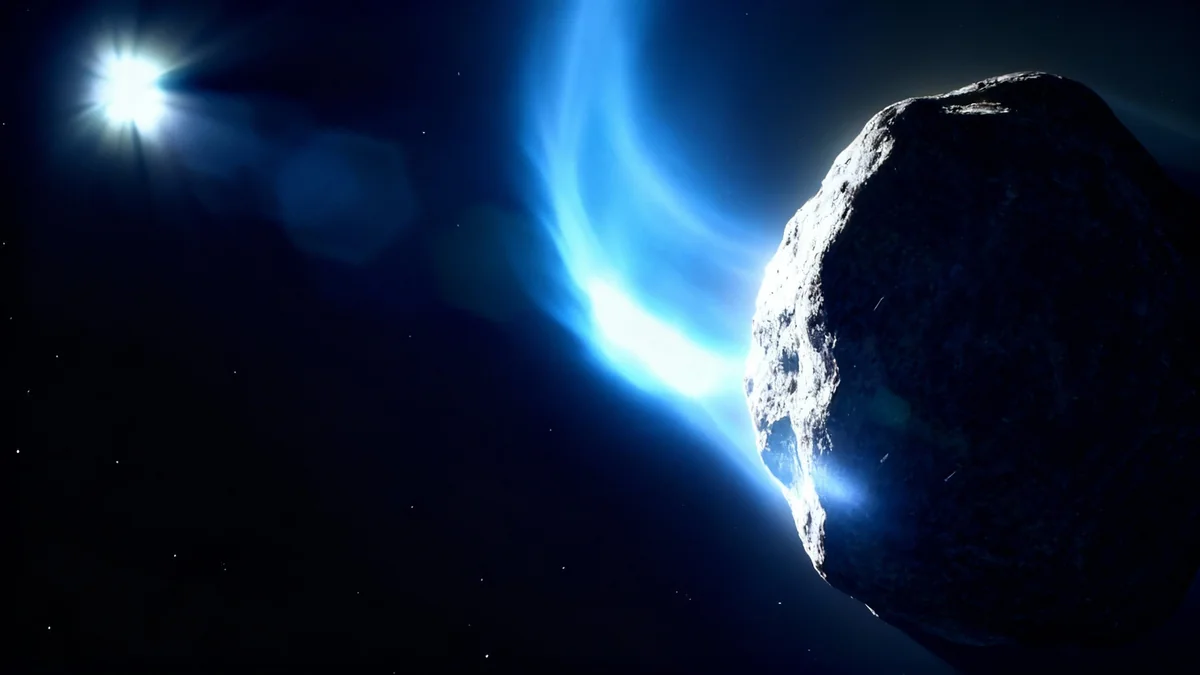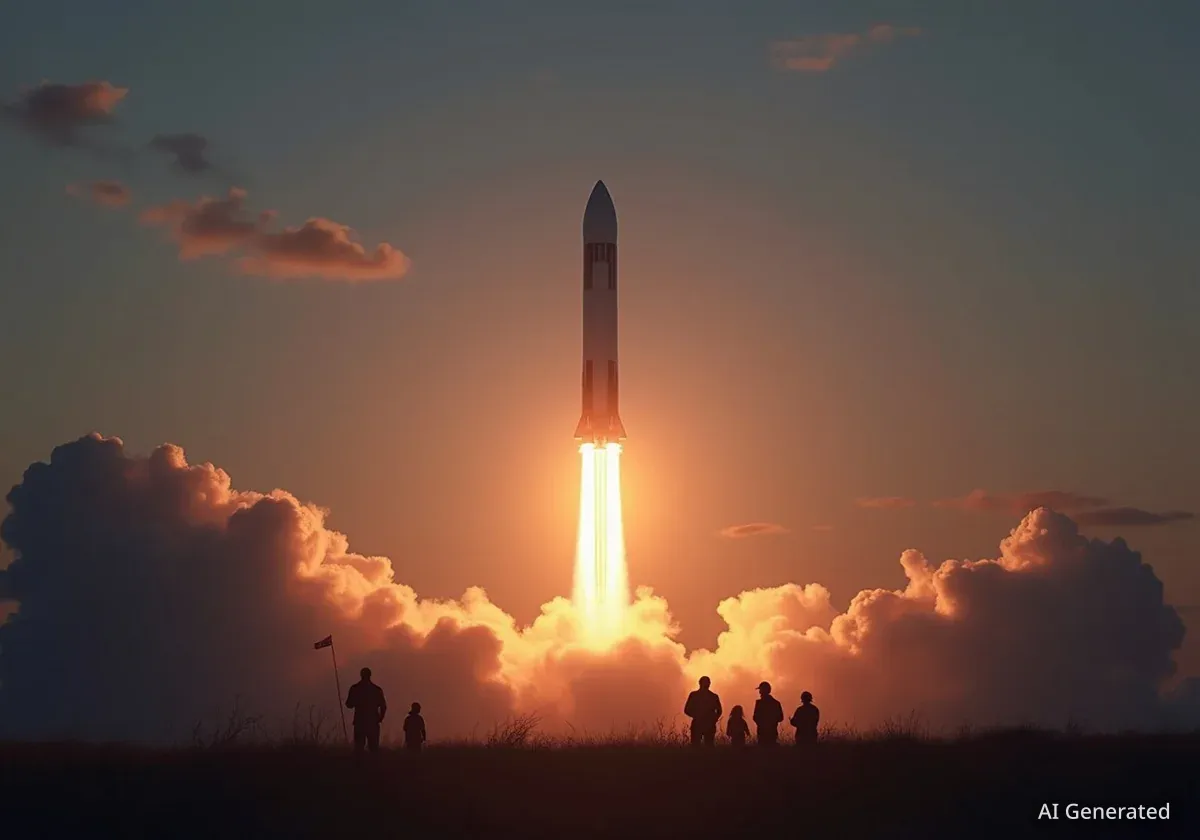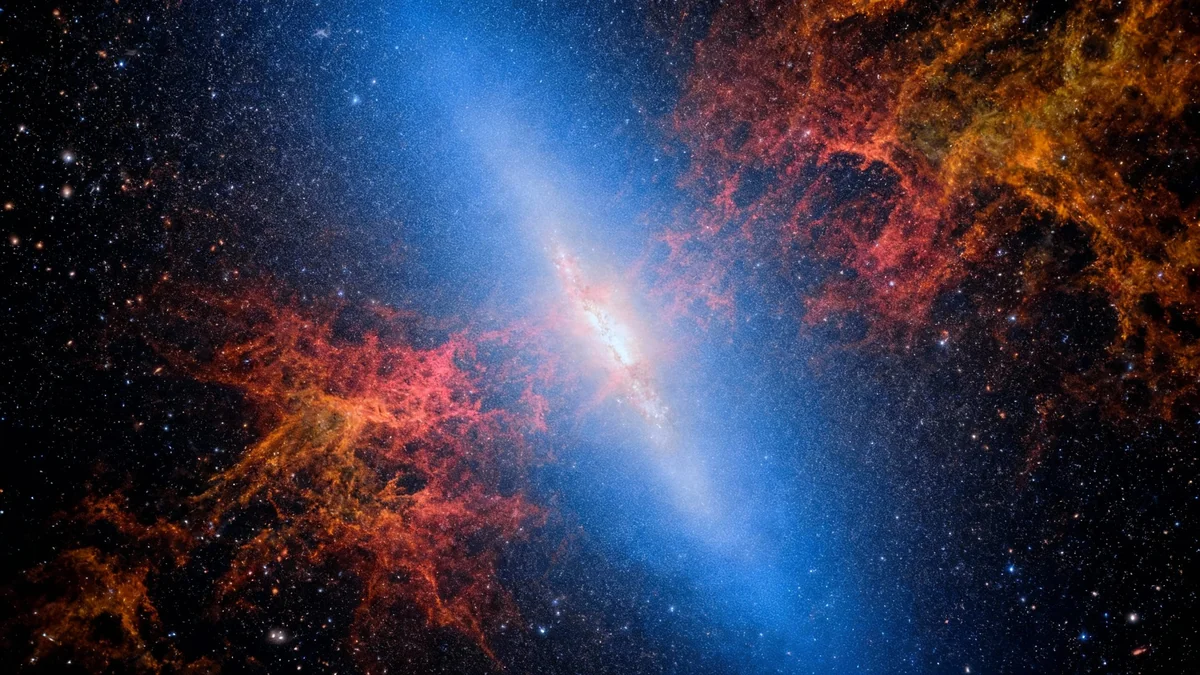The James Webb Space Telescope (JWST) has produced the most detailed infrared image ever taken of the matter jet erupting from the supermassive black hole in the M87 galaxy. The new observations provide a clearer view of the jet's structure and have successfully detected its faint, opposing counterpart, known as a counter-jet, for the first time in infrared light.
This achievement offers scientists new data on how supermassive black holes influence their surrounding galaxies. The M87 galaxy, located 55 million light-years from Earth, is home to the first black hole ever directly photographed by humanity.
Key Takeaways
- The James Webb Space Telescope captured the most detailed infrared image to date of the jet from the M87 galaxy's central black hole.
- For the first time in infrared, the telescope detected the faint counter-jet, which moves away from Earth.
- The data reveals new structural details, including knots and twists within the main jet, indicating complex particle acceleration.
- These observations help scientists study the extreme physics of black hole jets and their role in galaxy evolution.
A Sharper Look at a Cosmic Phenomenon
For over a century, the powerful jet of matter streaming from the core of the Messier 87 (M87) galaxy has been a subject of intense astronomical study. Now, using its advanced infrared capabilities, the JWST has provided an image of this jet with unparalleled clarity.
The observations were conducted by a team led by Jan Röder from the Institute of Astrophysics of Andalusia in Spain. Using Webb's Near Infrared Camera (NIRCam), the researchers captured the jet across four different infrared bands. The resulting image showcases the jet as a bright stream extending several thousand light-years from its source.
The M87 Galaxy and its Black Hole
M87 is a giant elliptical galaxy situated approximately 55 million light-years away in the Virgo cluster. At its center lies a supermassive black hole, designated M87*, which gained worldwide fame in 2019 when the Event Horizon Telescope collaboration released the first-ever direct image of a black hole's shadow. This black hole is the engine driving the massive energetic jet.
To isolate the faint light from the jet, the research team employed a meticulous data processing technique. They carefully subtracted the light from the galaxy's stars, dust, and other background objects. According to the team's paper, published in the journal Astronomy and Astrophysics, this process yielded the most detailed infrared portrait of the M87 outflow ever created.
Revealing Hidden Structures
The new JWST image reveals intricate details within the jet that were previously difficult to discern. Bright knots are visible along its length, marking areas where charged particles are accelerated to velocities approaching the speed of light. These features provide a map of the energetic processes occurring within the outflow.
Extreme Physics in Action
Jets like the one from M87* are natural laboratories for studying some of the universe's most extreme physical processes. The energy they carry is immense, and they are capable of accelerating particles to levels far beyond what can be achieved in any particle accelerator on Earth.
Detection of the Counter-Jet
One of the most significant findings from this observation is the detection of the counter-jet. This is the corresponding stream of matter ejected from the black hole in the opposite direction of the primary jet. The counter-jet is notoriously difficult to observe because it is traveling away from us at relativistic speeds.
This motion causes its light to appear much dimmer due to an effect known as relativistic beaming. Webb's sensitivity allowed it to capture this faint structure in infrared light for the first time. The data shows the counter-jet is located about 6,000 light-years from the black hole and appears as two filaments connected by a bright spot, forming a shape consistent with previous radio observations.
Understanding Particle Acceleration
The detailed infrared data confirms that the light from the jet is generated by synchrotron radiation. This type of radiation is produced when charged particles, such as electrons, spiral around powerful magnetic field lines at extremely high speeds.
By analyzing the subtle differences in color across the various infrared bands, the science team could trace how these particles gain energy, cool down, and move along the magnetic fields that shape the jet.
Webb's sharp vision also resolved a bright region within the jet known as HST-1. Previous observations showed this feature moving at a speed that appeared faster than light—an optical illusion caused by its high velocity and angle of travel relative to Earth. The new image reveals that HST-1 is not a single point but is split into two distinct substructures. The researchers note this is evidence of shockwaves and complex particle dynamics occurring close to the black hole.
The Broader Impact on Astrophysics
Studying black hole jets is crucial for understanding the relationship between a supermassive black hole and its host galaxy. These powerful outflows can have a profound impact on their environment.
- Regulating Star Formation: By injecting vast amounts of energy and matter into the galaxy, jets can either trigger the collapse of gas clouds to form new stars or blow the gas away, effectively shutting down star formation.
- Distributing Elements: Jets act as a mechanism for transporting heavy elements forged inside the galaxy far out into the sparse medium between galaxies.
- Galaxy Evolution: Understanding these feedback mechanisms is essential for building accurate models of how galaxies form and evolve over cosmic timescales.
The latest observations from the James Webb Space Telescope provide a critical new dataset for this field. The clarity and detail of the M87 jet and its newly seen counter-jet will allow astronomers to refine their models of these powerful cosmic engines and their role in shaping the universe.





